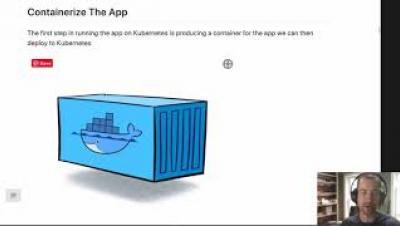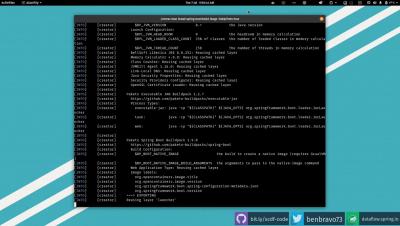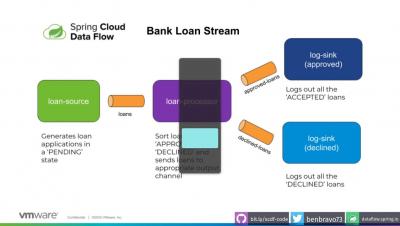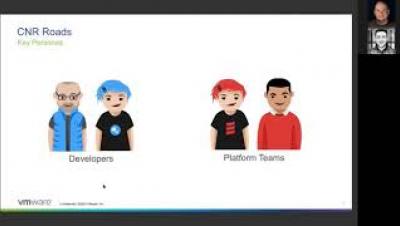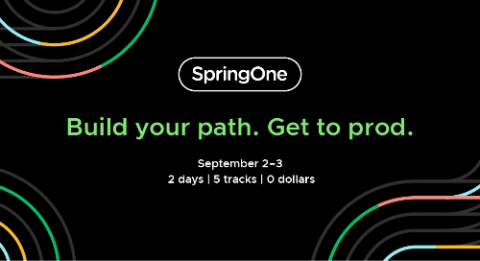Operations | Monitoring | ITSM | DevOps | Cloud
July 2020
Tanzu Talk - Large scale application modernization with Rohit Kelapure
Developing During a Pandemic: The Lessons We Learned
In January 2020, the UK recorded its first case of COVID-19. The world was facing the unknown, and the only apparent way to contain the virus was for every nation across the planet to shut down. As governments across the globe planned for the unknown, organizations rapidly began seeking ways to support efforts to save lives and restart the economies of these countries. One such endeavor was the vital role technology could play in contact tracing.
ZIM Integrated Shipping Services use VMware Pivotal Labs and Tanzu App Service to achieve velocity
Tackle Application Modernization in Days and Weeks, Not Months and Years
How to Achieve AWS, Azure, or GCP Observability at Scale
Tanzu Tuesdays - Exploring VMware Open Source
This Month in Spring - July 2020
Hi, Spring fans! 2020, eh? It's easy to complain, and goodness knows I certainly do my fair share, but - as my dad always said, "any day on this side of the dirt is a good day," and I try to remember that. There's a lot to be enthusiastic about if you like. I always look. That's what this roundup is all about. It's a fount of the fun, fantastic, production-powered, and boundless beauty of all things Spring Boot.
Installing Spring Cloud Dataflow Locally On Kubernetes With Helm
Creating a http log stream with Spring Cloud Data Flow
Creating & Deploying Spring Cloud Stream Apps to Spring Cloud Data Flow
Getting Started With The Spring Cloud Dataflow CLI Tool
Spring Cloud Stream Processors And Scripted Deployments With Spring Cloud Data Flow
Announcing Spring Cloud Data Flow for Kubernetes
Spring Cloud Data Flow first emerged in 2015 as an evolution of the innovative Spring XD. Since then, hundreds of organizations such as CoreLogic have adopted this open source technology, which is available on Cloud Foundry and Kubernetes. Generally available today, Spring Cloud Data Flow for Kubernetes addresses the needs of streaming and batch processing in the enterprise. This new offering is only available through the VMware Spring Runtime subscription.
Crafting Kubernetes Custom Controllers With Angela Chin
Cloud Native Readiness for Applications
Concourse for VMware Tanzu v6.3.0 Shows That the Future Is Bright for Automation
Platform operators, you continue to amaze us. You’ve embraced DevOps and site reliability engineering. You’ve applied these philosophies to your daily work. And you’ve used Concourse CI (the “continuous thing-doer”) to address all manner of operational workflows. When we created the project in 2016, we couldn’t have imagined all the ways you’d use Concourse to deliver fantastic stability and scalability outcomes to your stakeholders.
SpringOne Sessions and Workshops Now Released-Register Today!
SpringOne is going free and online in 2020. On September 2 and 3, hear from all your favorite speakers and companies along with a host of new experts, and access exciting new content—all as part of your virtual event experience: Catch up on the latest announcements from the Spring and VMware Tanzu product teams. Get inspired by hearing real-world success stories from other organizations. Surf across five tracks of breakout content, presented live over two days.
vSphere 7 with Kubernetes Network Service, Part 2: Tanzu Kubernetes Cluster
vSphere 7 with Kubernetes enables operations teams to deliver both infrastructure and application services as part of the core platform. The Network service provides automation of software-defined networking to both the Kubernetes clusters embedded in vSphere and Tanzu Kubernetes clusters deployed through the Tanzu Kubernetes Grid Service for vSphere.
Upgrading Kubernetes the Easy Way with Tanzu Kubernetes Grid Service for vSphere
Lifecycle management is one of the most complicated components of Kubernetes. In a past article, we showed how to modify a cluster to change the type and size of its nodes. In this post, we will explain how to upgrade the Kubernetes version of a Tanzu Kubernetes cluster when there is a new release. And the best part is that it’s all done in just a few easy steps using the Tanzu Kubernetes Grid Service for vSphere.
Upgrade Kubernetes to a New Version with Tanzu Kubernetes Grid Service for vSphere
Learn How to Build and Maintain Images with KubeAcademy's New Course
We’re excited to announce a new KubeAcademy course—Building Images. Designed for developers, devops engineers, and architects, this intermediate-level course covers different approaches for building images. Completing it will give you the skills and understanding needed to easily start building images and maintain them over time.
The CI/CD Experience: Kubernetes Edition - Fireside Chat
Tanzu Tuesdays - Spring Cloud Contract with Olga Maciaszek-Sharma
Simply Scaling a Tanzu Kubernetes Cluster with the TKG Service for vSphere
The previous two posts in this series walked through both the architecture of the Tanzu Kubernetes Grid (TKG) Service for vSphere and how to use it to deploy Tanzu Kubernetes clusters. In this post, we’ll walk through how to take a cluster and scale it on demand. The examples shown are consistent with the same tag-demo-cluster-01 cluster spec used previously.
Streamline Your Teams' API Design and Strategy with User-Centered Documentation
Every day, application programming interfaces (APIs) are created to speed up the development of modern software applications—from globally-scaled public services to internal endpoints for your proprietary applications. For engineering leaders with teams that write and maintain APIs, however, it can be difficult to know how to prioritize API features, encourage adoption, and respond to feedback from developers. And as we at VMware Pivotal Labs well know, rapid iteration leads to product success.


